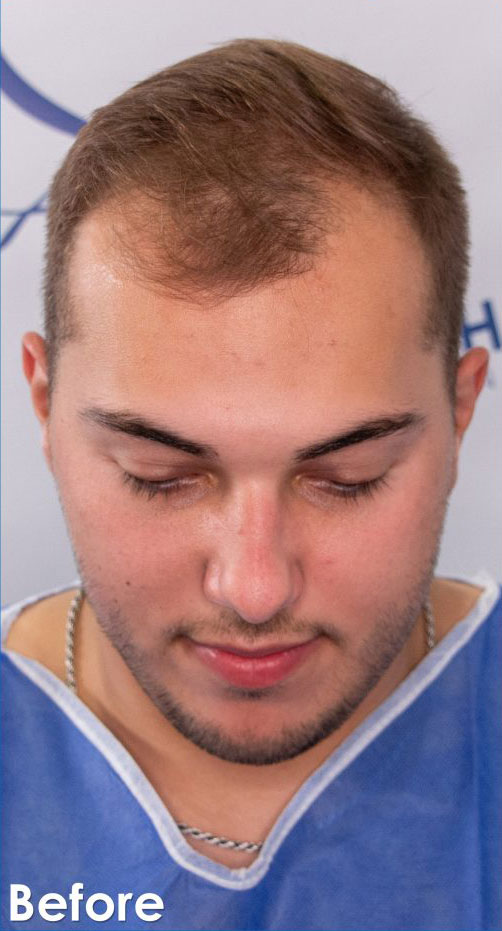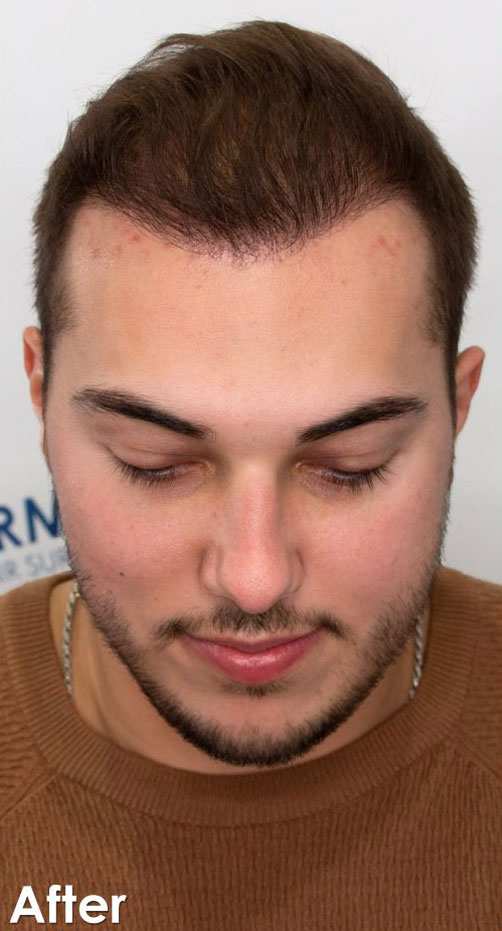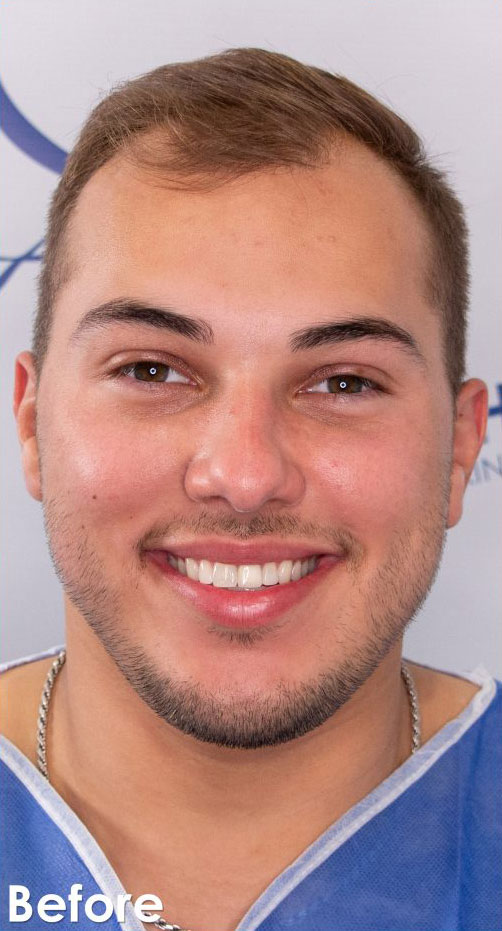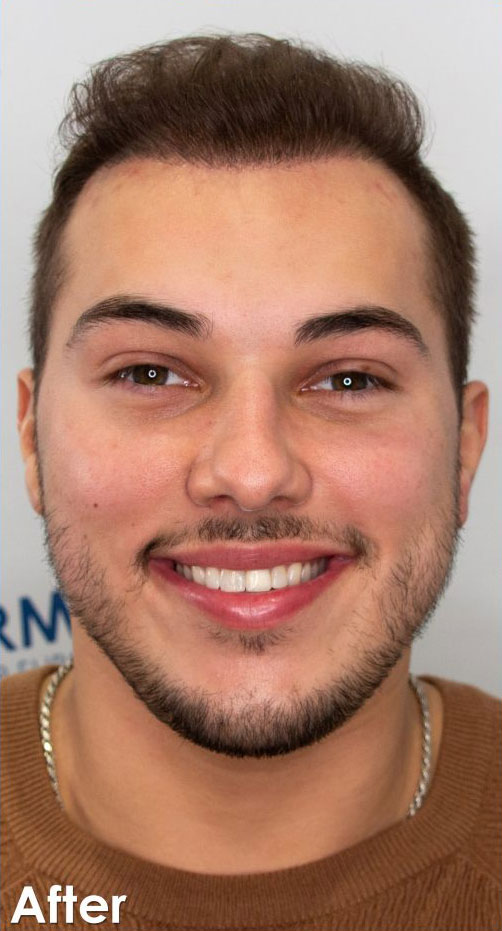Where It All Started
After the tragic Humboldt Broncos bus crash in 2018 that degloved a portion of his scalp causing permanent hair loss, the only solution to restore his hairline was hair transplant surgery. Using the FUE transplant method we determined that 2,000 grafts placed in the frontal-temporal regions would help to fill in and rebalance his hairline.
Before The Surgery
While we originally only knew Kaleb from his amazing story covered so thoroughly on the news, meeting him was a privilege. He is a talented hockey forward, a writer, and an aspiring chiropractor.
We of course wanted to take his case and help anyway we could, but hair transplant surgery is never that straight-forward. First, we asked Kaleb to come into The Sharma Clinic for a consultation with Dr. Sharma. This meeting allowed Dr. Sharma to determine that Kaleb was a suitable candidate for surgery and also how many grafts would be required for the procedure. The consultation is best first step for anyone considering the procedure.
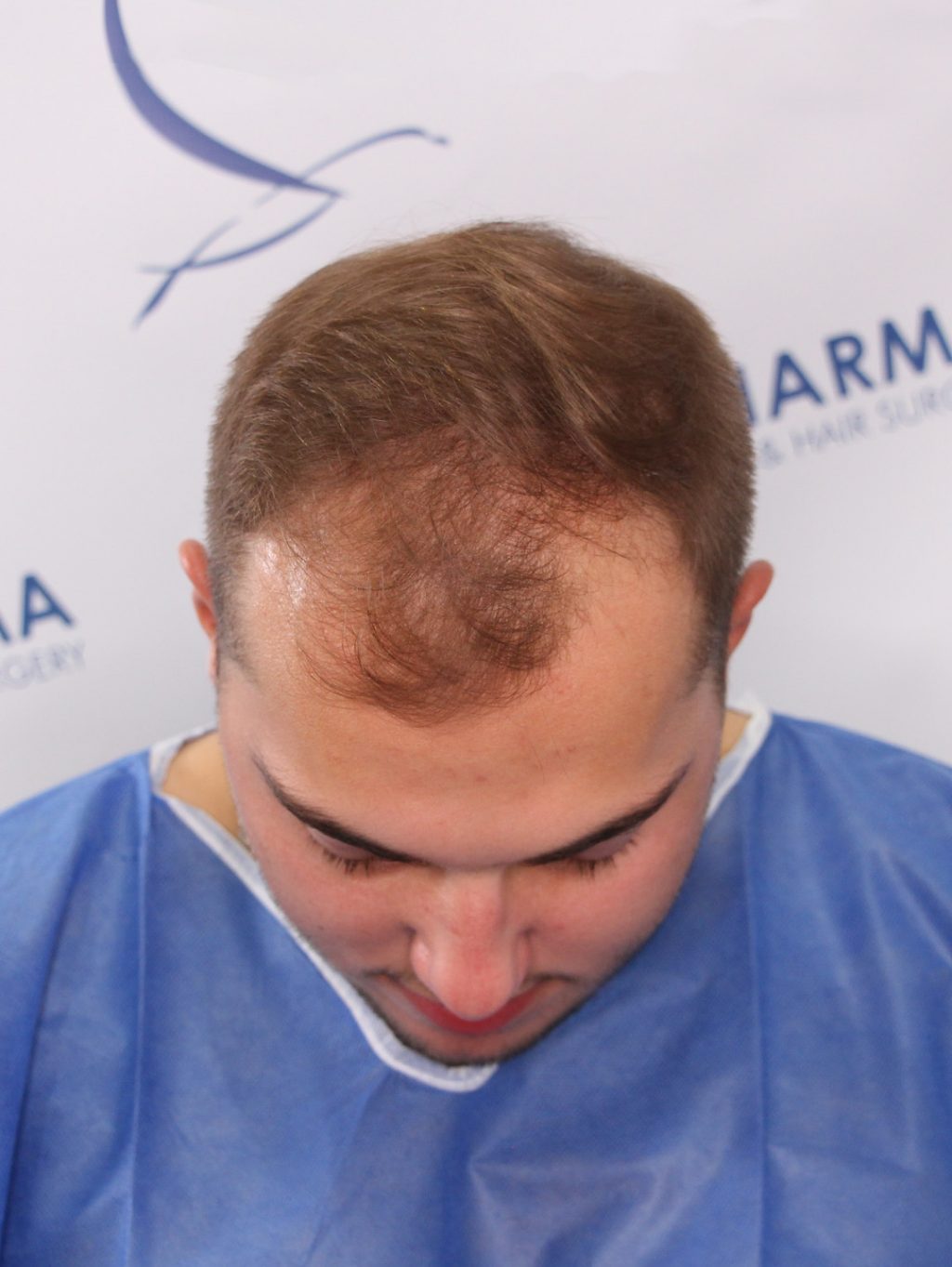
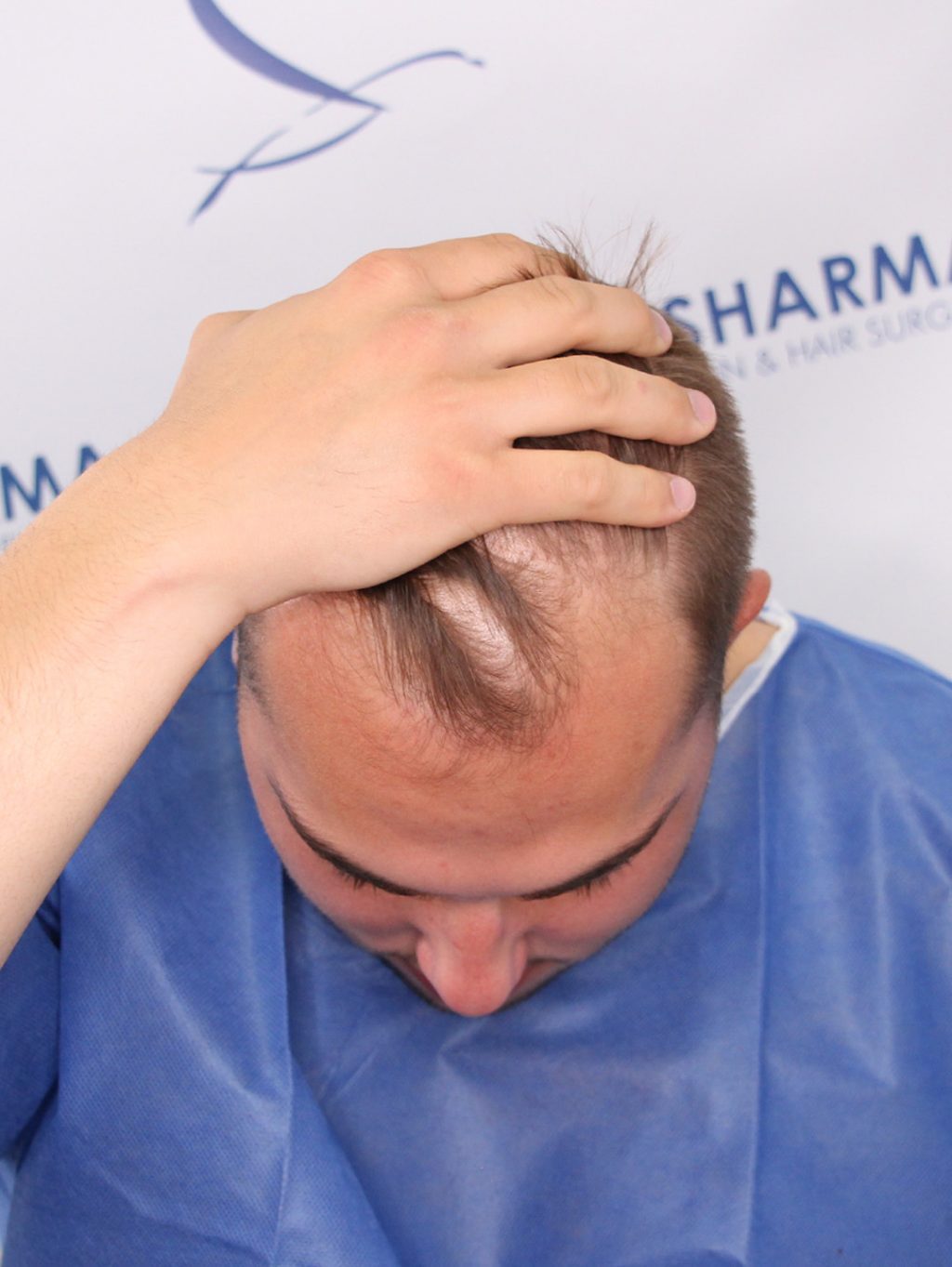
No Two Surgeries are the Same
When performing surgery on an area of previous scar tissue it is imperative to plan the procedure carefully. Scar tissue does not heal as well as normal tissue and graft positioning and blood supply must be taken into careful consideration. With Kaleb, the recipient area had undergone a previous degloving injury which resulted in dense scar tissue. The recipient incisions were modified and the angle of graft placement was manipulated to ensure the new hair would sit naturally and most importantly in a dense fashion. The procedure went very well and we wish this beautiful young man nothing but the best.
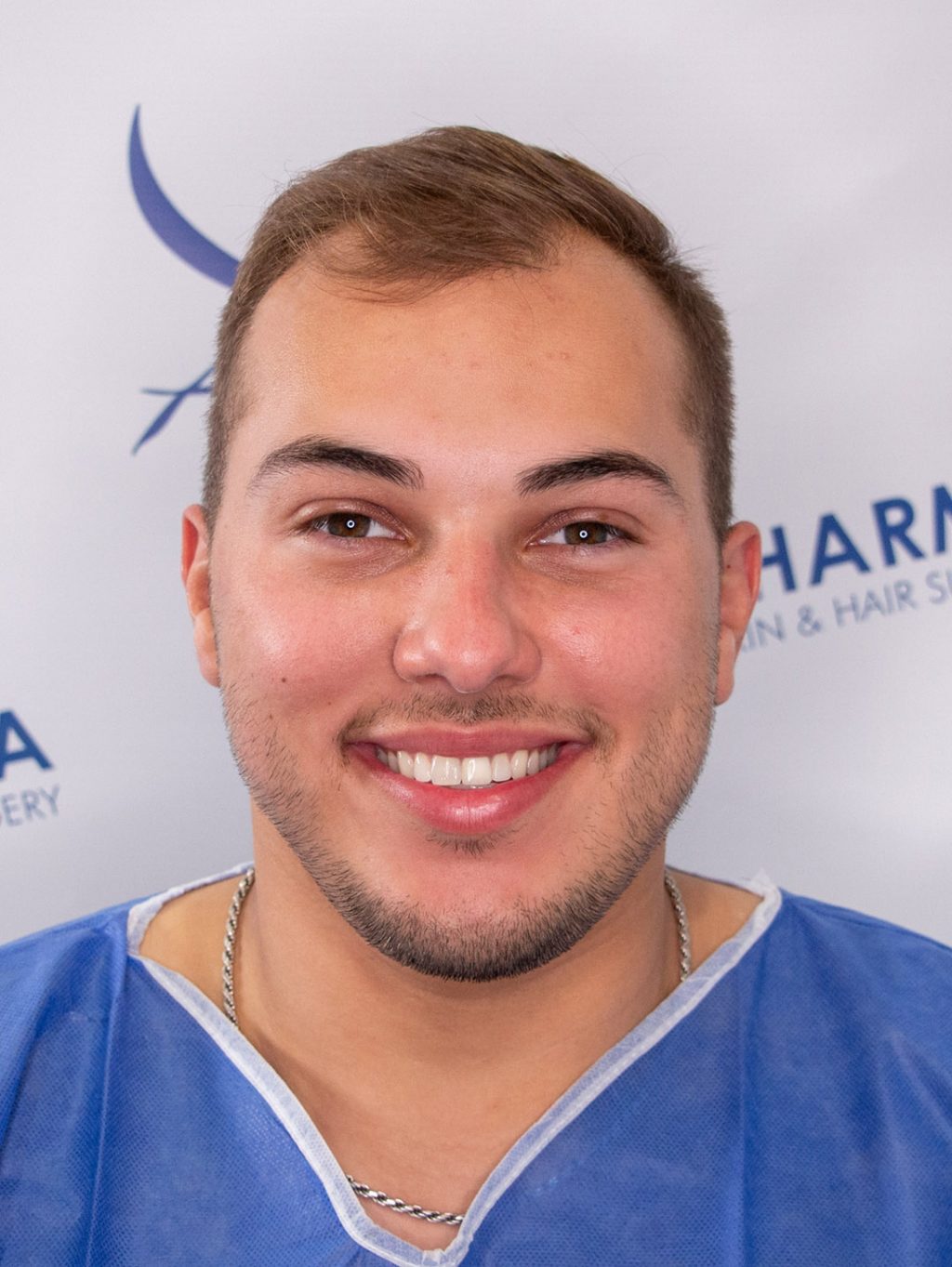
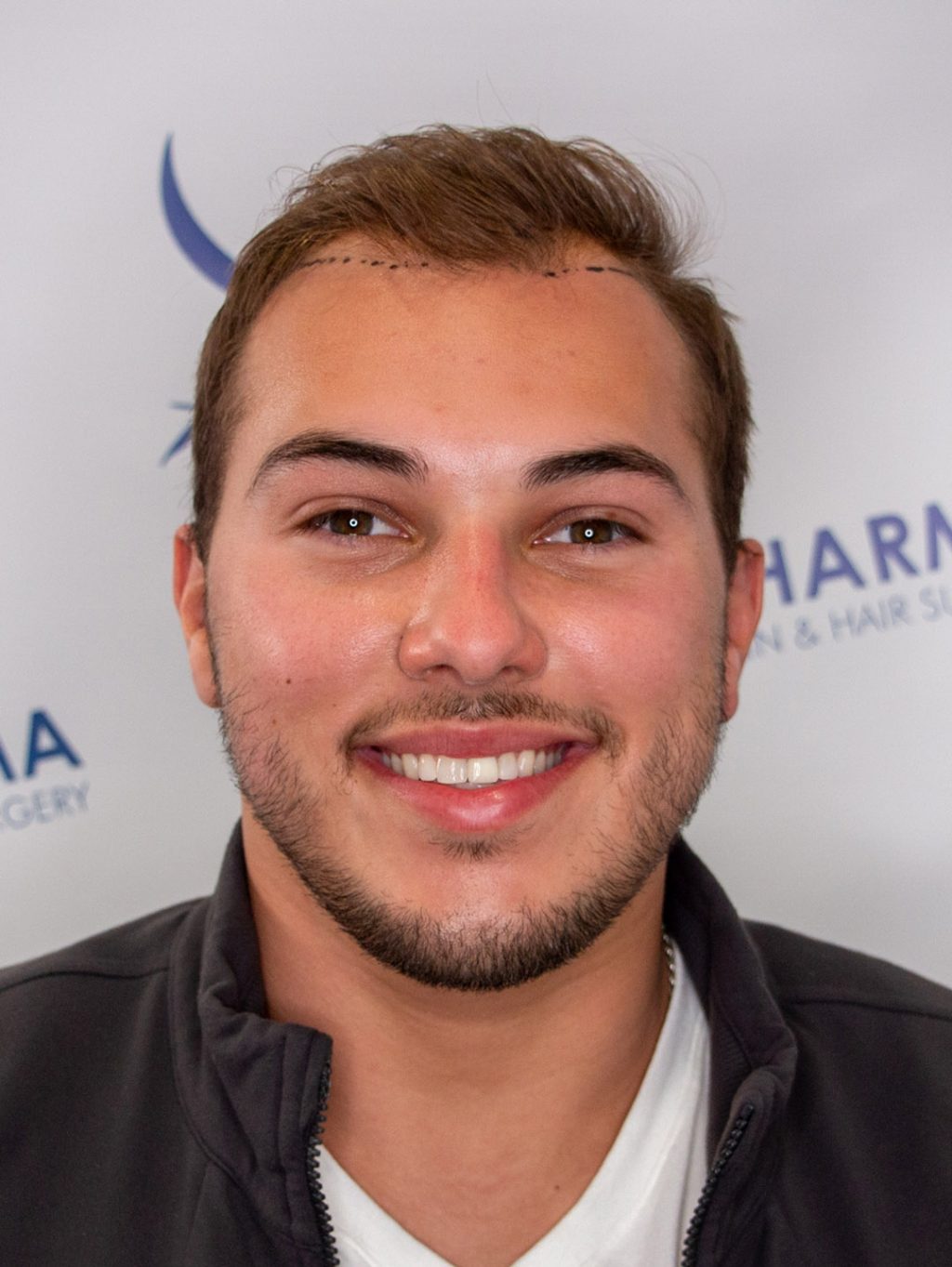
Kaleb Six Months Later
This video featured Kaleb’s 6 month mark following surgery. This means we are seeing only 60% of his full growth and it’s already looking amazing! Kaleb will notice hair continuing to sprout and grow from the scalp as late as 12 months post-surgery. Those hairs will then take roughly half a year to mature, this is why the full hair transplant result takes 18 months to reach it’s full potential. This FUE hair transplant of over 2,000 grafts will have a huge impact to bolster Kaleb’s hairline giving him a more youthful appearance.
We are excited to continue following his story, if you want live updates make sure to follow Kaleb on Instagram.
Living his best, hatless life
16 Month Update!
We love seeing our patients thriving and enjoying their new hair. Kaleb came to our clinic in June of 2021 and Dr. Sharma performed a 2,000+ graft F.U.E. hair transplant procedure. You may remember seeing Kaleb’s hair transplant journey on our page – he was kind enough to let us document the entire process. Kaleb is a fantastic person with a huge heart and we were honored to have him at our clinic.
If you want to watch his hair restoration journey week by week we welcome you to follow his excellent Instagram page.
Kaleb: keep doing what you do best. Showing everyone that through perseverance they can do anything. Thank you for trusting our clinic for our hair restoration.

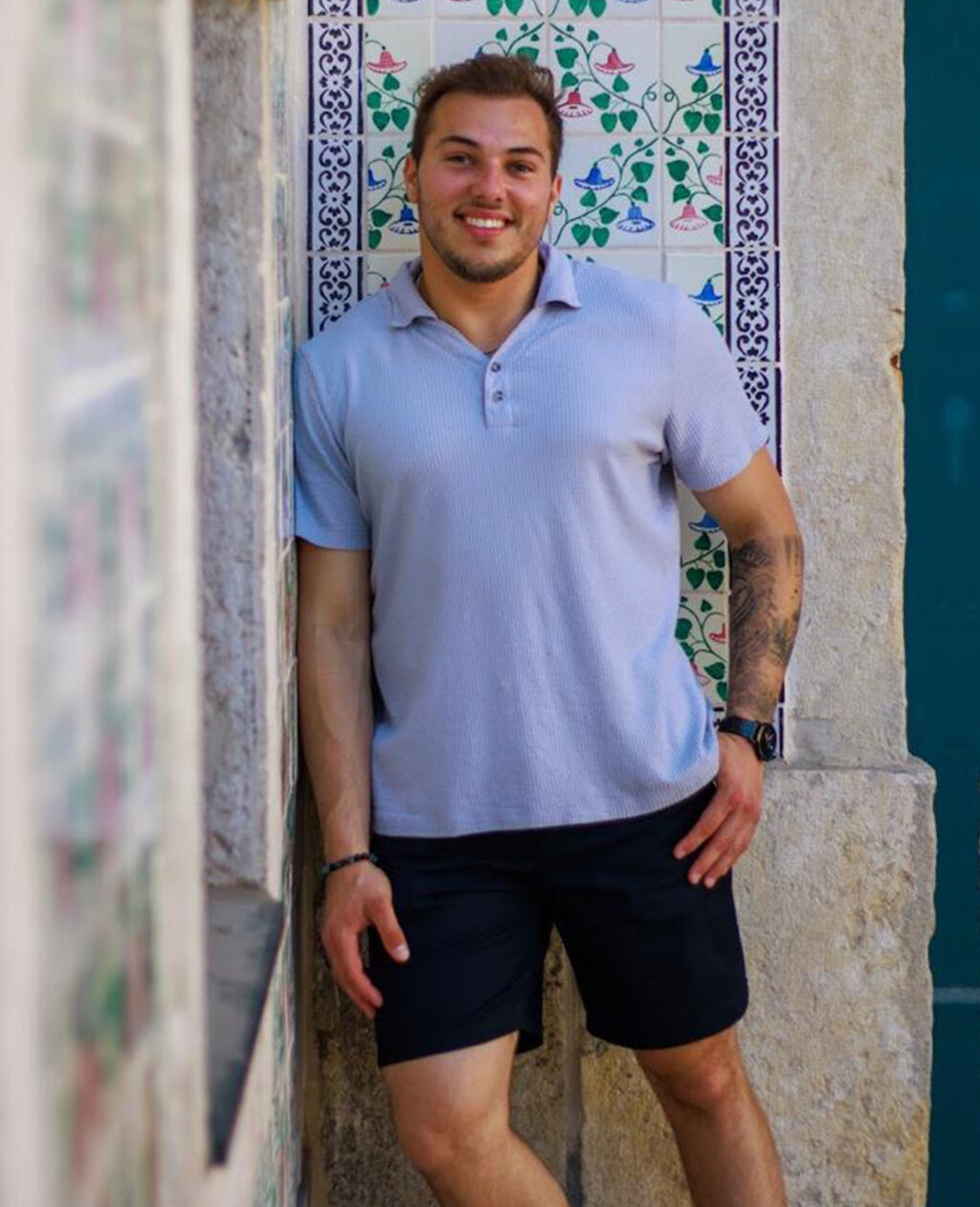


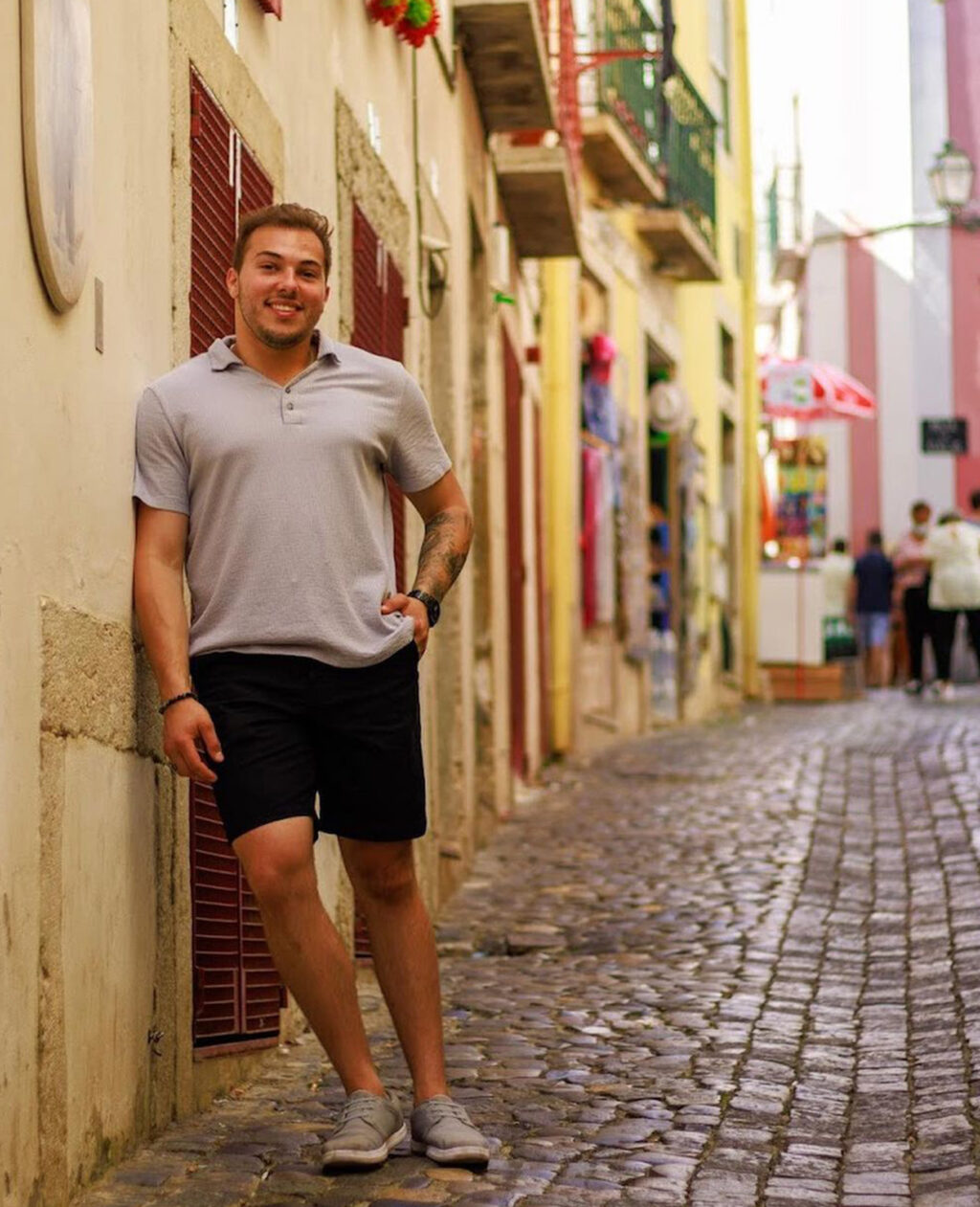
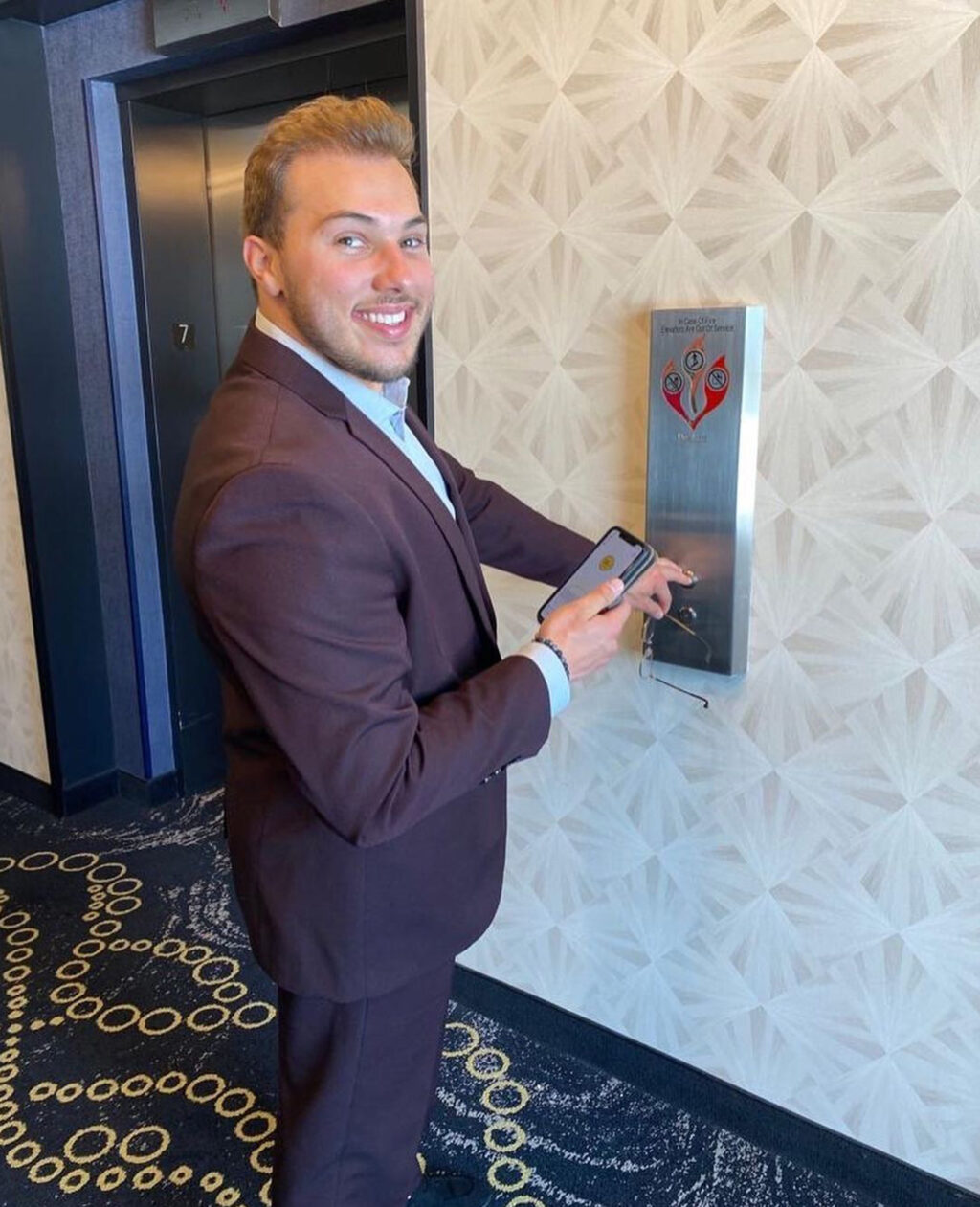
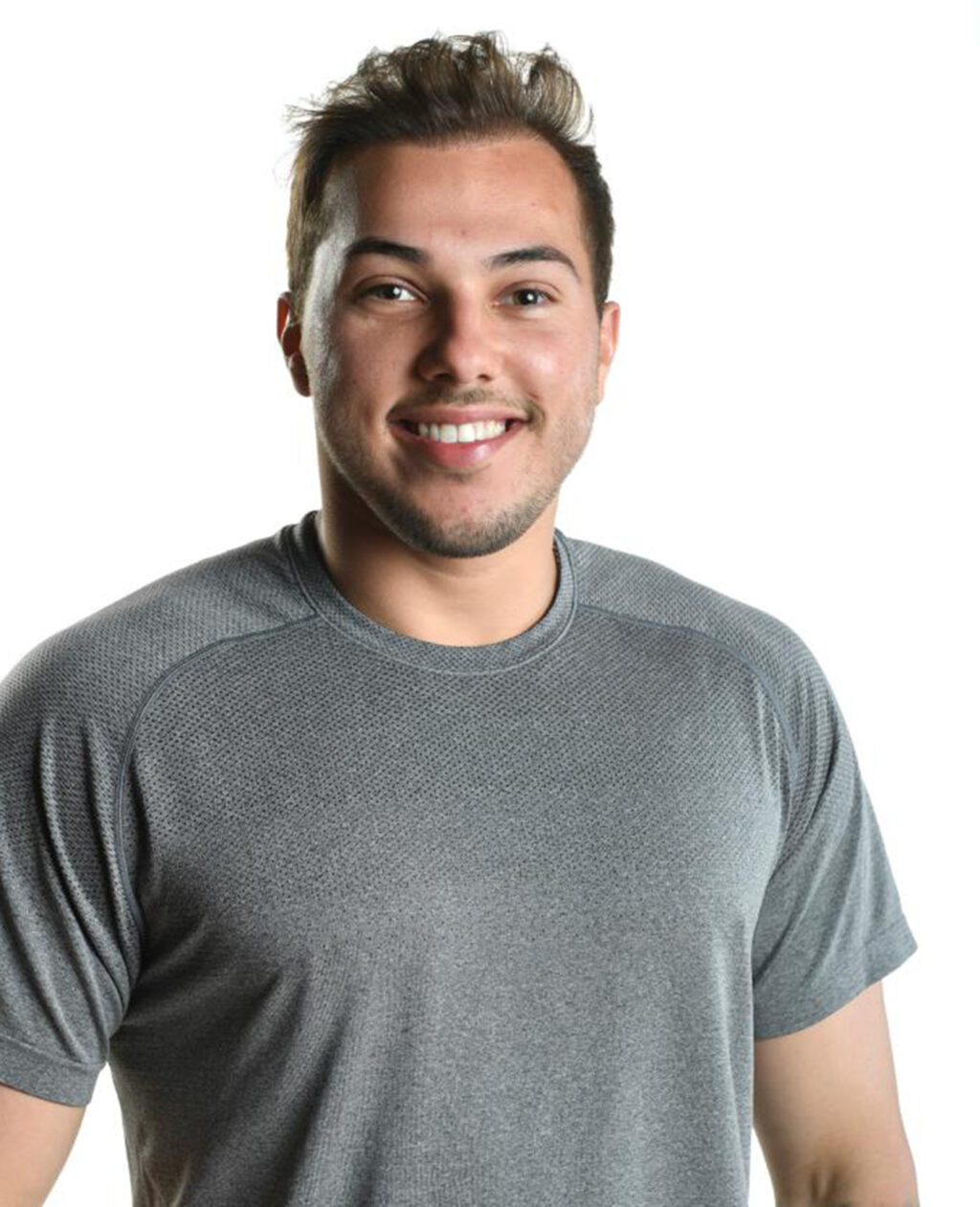

What is the F.U.E. Transplant Technique?
The F.U.E. process is different in that the head must be shaved so the hair follicles can be harvested individually. Since a smaller area is harvested, a minimally-invasive surgical tool can be used to avoid the appearance of scars. This tool is a small punch that keeps the hair follicle in the scalp tissue, leaving a small dot behind. The benefit is that no scalpel is needed for the procedure. The F.U.E. method is quickly becoming the most popular choice for men requiring hair transplant surgery. The low downtime, light scaring and success rate are hard to beat.
When performing a hair transplant to the scalp it is very important to follow the unique hair patterns and angles that every person is born with. Here is how they are most commonly placed when addressing the hair line.
Two to four rows of “singles” are placed at the front to create a dense textured look. Singles are finer hair, something you will notice naturally occurring near the front. This is followed by 3 rows of “doubles” which lead us further in to the hairline. Behind this we place primarily “multi’s” to give the appearance of dense and thick hair.
This placement technique prevents a plucked ‘doll hair’ look. In the olden days patients often received large plugs in the frontal hairline consisting of 3-4 grafts which looked very unnatural. Thanks to microsurgery techniques the grafts can now become minuscule and the precision has gone up immensely.
For these reasons, a properly performed surgery takes time. Grafts are living tissue and require a very delicate handling to remain intact. Careful excision, transport, and implantation are key to a successful hair transplant.
Incisions
Dr. Sharma uses multiple different tools to make the incisions which will then be the placement site for each individual graft. This is an integral part of the procedure and the placement location and angle will determine how and where the hair will grow. The procedure is performed with a mixture of a regional anesthetic block and tumescent anesthesia.
Implantation
Graft placement is a painless but laborious part of the day at our clinic. Our nurses will be placing the grafts one-by-one into the incisions made by Dr. Sharma. Before this happens, we carefully select and clean the excised grafts to ensure we are only placing healthy and intact follicles. During this part of the procedure you are able to watch television or listen to music to help pass the time.
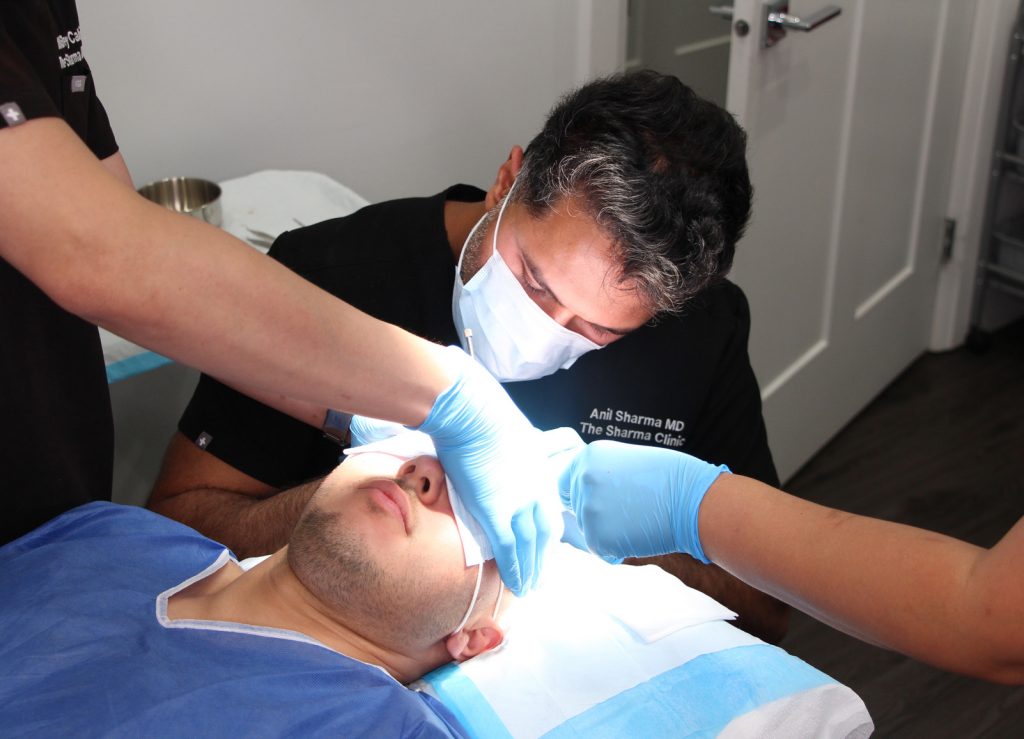
The Result
To see Kaleb’s full results, you will just have to wait. The surgery was performed in June of 2021 and the full result takes 18 months to fully mature. Patients see about 60% growth by the 6 month mark (January of 2021 in Kaleb’s case).

See Kaleb’s Results in Real Time
Follow Kaleb Dahlgren on Instagram @kalebdahlgren and watch his hair get better and better over the next year. Seeing candid photos is such a nice way to see the reality of the procedure, and you get to follow along this inspiring young man’s journey.
